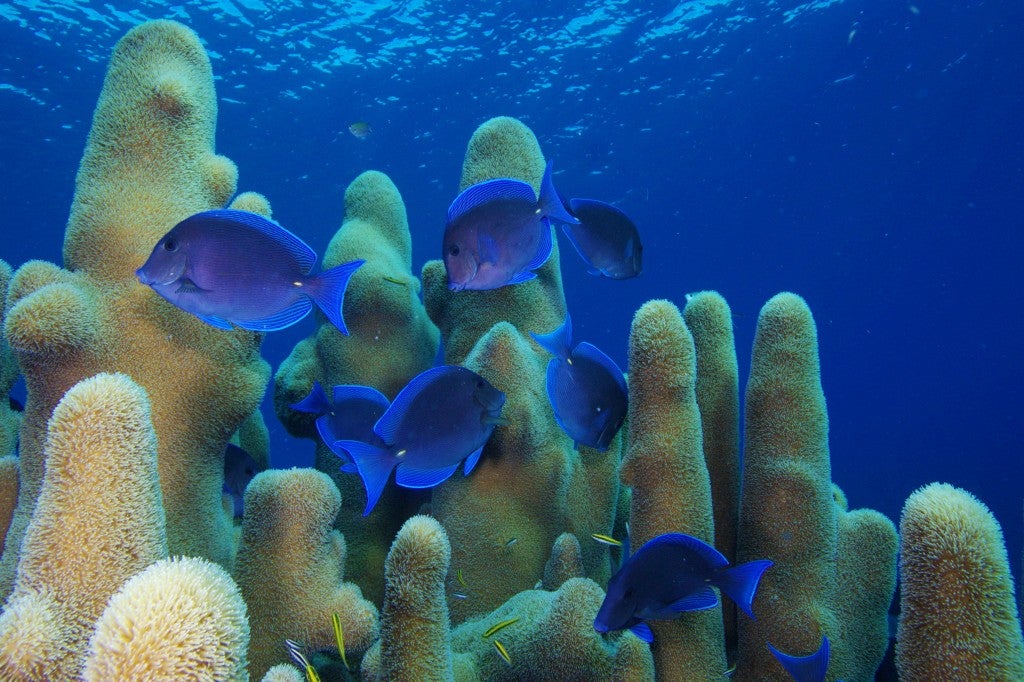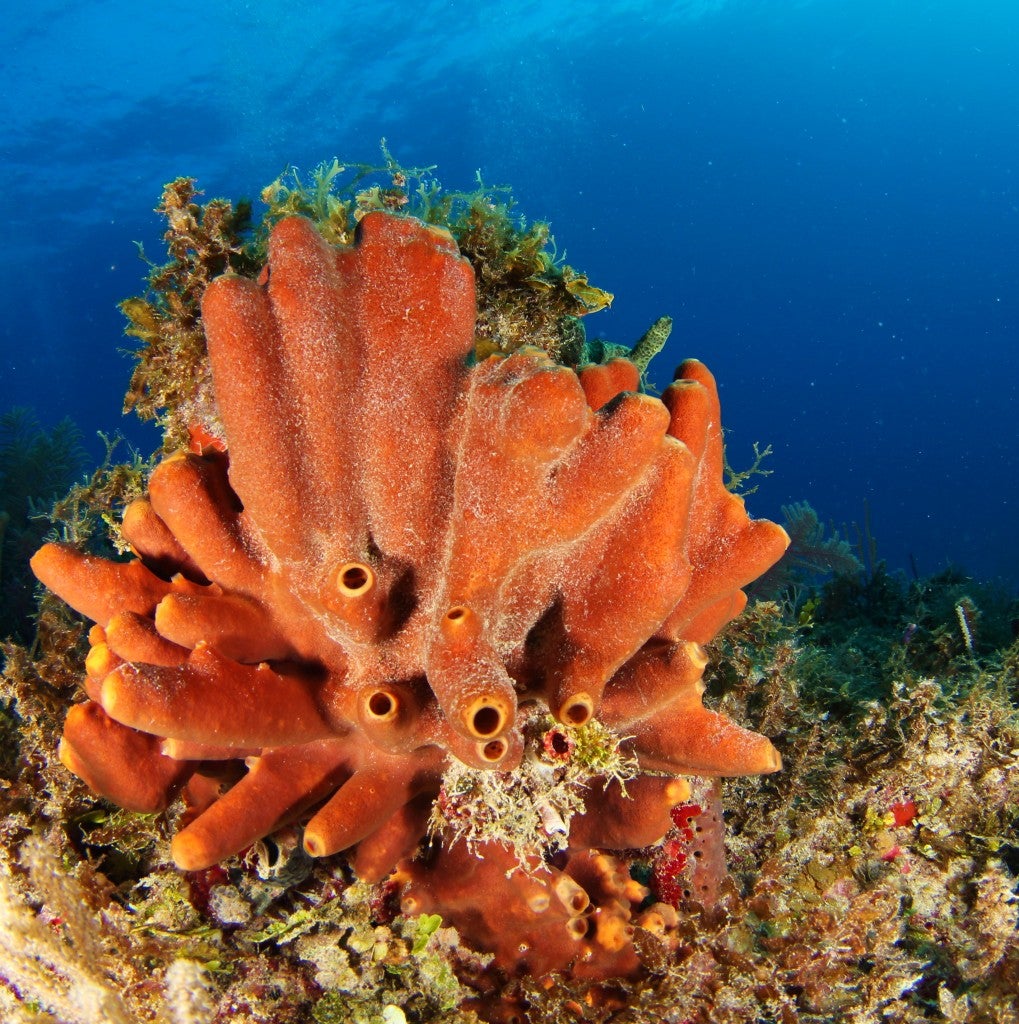
Gardens of the Queen, Cuba. Photo: Noel Lopez Fernandez
By: Kendra Karr & Rod Fujita
There is a general consensus that transitioning to ecosystem-based fisheries management will result in better outcomes for both marine ecosystems and the people who depend on them. But what exactly does that mean, and how exactly can fisheries management get there?
Ecosystem-based fisheries management has been thoroughly debated and there are many aspects to it. But one thing seems clear. When developing conservation and management goals, the entire ecosystem should be considered rather than just an individual fish population.
To actually achieve such goals, scientists and managers would need to quantify fishing targets and limits and then take actions intended to maintain fisheries and the ecosystem within a “safe operating space” associated with the maintenance of a variety of ecosystem goods and services. In our new publication, we have moved one step closer to identifying these fishing targets and limits for management in multi-species fisheries in coral reefs.
Typically, fisheries management in the U.S. is focused on managing fishing pressure on individual fish stocks, with the goal of keeping them healthy enough to produce good yields. But many nearshore fisheries — for example, finfish fisheries prosecuted in U.S. nearshore coral reefs — are multi-species fisheries.
Decades of research show clearly that:
- Reduction of a broad suite of fish populations to non-functional levels affects the basic processes that keep coral reef ecosystems and targeted stocks healthy.
- Coral reefs are capable of existing in different states — some of which are generally desirable because they are associated with high levels of coral cover, intact food webs including large predators, and high biodiversity; supporting multiple ecosystem services such as fisheries and tourism.
- Coral reefs can also exist in other states that are not as desirable because they have lower levels of coral cover, degraded food webs, fewer large fish, and lower biodiversity – and may produce fewer ecosystem services at lower levels.
Our latest publication corroborates the findings of many other studies showing that transitions

Gardens of the Queen, Cuba. Photo: Noel Lopez Fernandez
between these states are not gradual or linear, but rather sudden. We also show that these transitions are associated with certain thresholds — abrupt non-linear changes in the state of a coral reef — in fish biomass.
These insights — that coral reefs exist in different states, that fish are important for maintaining desirable states, and that coral reefs can change state relatively quickly when fish are removed from the system — provides a basis for developing targets and limits for ecosystem based fisheries management in coral reefs.
How much can we remove from the ocean and maintain a healthy ecosystem?
The sustainability of coral reef fisheries in the U.S is poorly understood – no one really knows how much fish biomass can be removed from coral reefs without reducing sustainable fishery yield or altering the state of the system. Our research, examines the amount of fish biomass that can be removed from coral reefs, without shifting the health of the ecosystem to a state that cannot support continued fishing activities or other ecosystem services.
By examining thousands of data points across 26 Caribbean countries over 18 years, we found:
- Empirical relationships between metrics of coral reef state and loss of fish biomass.
- Several metrics (e.g., macroalgal cover, change in fish assemblage) show thresholds at high fish biomass levels, supporting the concept that coral-dominated states are associated with high fish biomass.
- Other metrics (e.g. herbivorous fishes and coral cover) show thresholds at lower fish biomass levels, suggesting that such levels may be associated with transitional states and finally macroalgae-dominated states.
- If levels of drivers that cause transitions between states are identified, management measures could be aimed at maintaining drivers below these levels to avoid ecosystem shifts and preserve a diverse portfolio of ecosystem services.
Using thresholds for ecosystem-based management
One of the obstacles to implementing ecosystem-based management in nearshore tropical reef fisheries is the lack of reference points — targets and limits —that trigger management actions. These numerical levels are important management targets because altering driver levels generally has accompanying social and economic trade-offs that managers will be expected to minimize (e.g. loss of fisheries revenue).
We suggest that in data-limited coral reef fisheries, such as in the U.S. Caribbean:

Gardens of the Queen, Cuba. Photo: Noel Lopez Fernandez
The ratio of fish biomass to unfished fish biomass (i.e., measured in no-take reserves with similar habitat) can be used to assess the risk of ecosystem state change and this relationship can be used to develop reference points that guide precautionary ecosystem-based management.
- High levels of fish biomass (i.e., above 60% or 0.6 of unfished biomass) may be appropriate for the provisioning of multiple ecosystem services, but may be associated with sub-maximum fishery yield.
- If maximizing fishery yield is a central concern, maintaining fished to unfished biomass ratios near 0.5 is associated with coral-dominated states and may also result in pretty good yield ( 80% of maximum sustainable yield) for a multi-species fishery with relatively low risk of ecosystem change.
- Biomass ratios < 0.3 are associated with overfishing and transitions to macroalgal-dominated states, and might serve as an indicator of risk of both.
Quantitative thresholds in fish biomass can be used to develop reference points that guide management aimed to (i) maintain desirable coral reef conditions, (ii) establish a system-specific multi-species target for generating pretty good yield and (iii) maintain sustainable multi-species fishery resulting in what could be considered ecosystem-based fisheries management in coral reefs.
EDF will continue to refine and test this approach, while advocating their use in assessing coral reef status and developing precautionary aggregate catch or effort policies for data-limited multispecies fisheries prosecuted in coral reefs.









